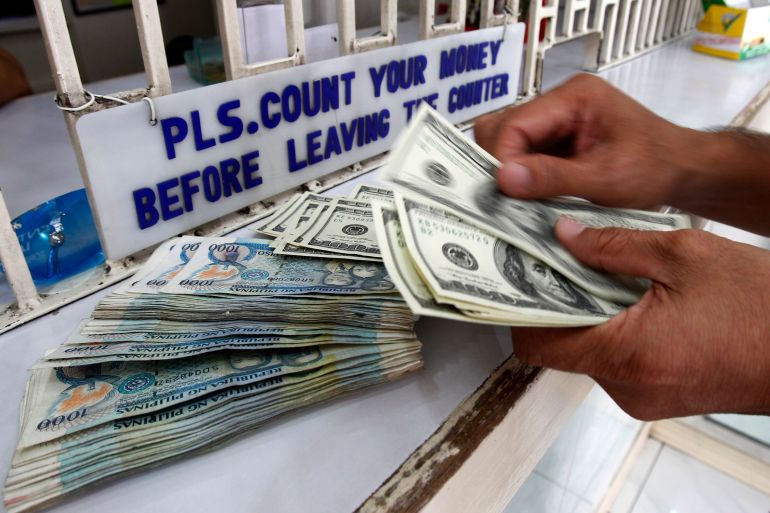Philippine economy grows 7.4 percent, slowing from Q1
Southeast Asian country’s economic expansion slows from 8.2 percent growth during the first quarter.

The Philippines’s economy grew 7.4 percent during the April-June quarter, fuelling expectations of interest rate hikes to cool soaring prices in the archipelago.
The second-quarter results fell short of market forecasts and the 8.2 percent expansion in gross domestic product (GDP) recorded between January and March.
Keep reading
list of 4 itemsHow does India have twice as many women airline pilots as the US?
China’s gamers hit pause button amid few releases, tough economy
Taiwan holds live-fire drills as China extends war games
Still, the results fell within the government’s official growth target, buttressing the case for the central bank to further tighten monetary policy to cool rising inflation.
The Bangko Sentral ng Pilipinas (BSP) last month unveiled a 0.75 percentage point rate hike before inflation hit 6.4 percent in July, the highest level in nearly four years.
The BSP has suggested it may raise its key interest rate by half a percentage point at its August 18 policy meeting amid growing confidence the economy can withstand higher borrowing costs.
Economic Planning Secretary Arsenio Balisacan said “global headwinds”, particularly inflation, had contributed to the slowdown, but the country’s economic performance had beaten regional peers such as China and Indonesia and remains on track to hit the government’s 2022 GDP growth target of 6.5-7.5 percent.
“Timely changes in COVID-related policies, such as easing alert levels, removing tourism restrictions, and accelerated vaccine rollout, helped increase economic activities,” Balisacan said.
President Ferdinand Marcos, who began a six-year term in June, is aiming to achieve 6.5-8 percent growth annually from 2023 to 2028, pledging to harness agriculture and infrastructure construction to fuel the archipelago’s rebound from the pandemic.
“Today’s GDP report points to full year growth settling at the lower-end of the government’s 6.5-7.5 percent growth target,” ING said in a note.
“The economy is facing the triple threat of accelerating inflation, rising borrowing costs and a relatively high debt-to-GDP ratio. Faster inflation, which was last reported at 6.4 percent, should cap overall household spending while rising interest rates are likely to deter investment outlays. Meanwhile, elevated levels of debt could act as a handicap and mitigate the ability of the national government to provide stimulus in the near term.”